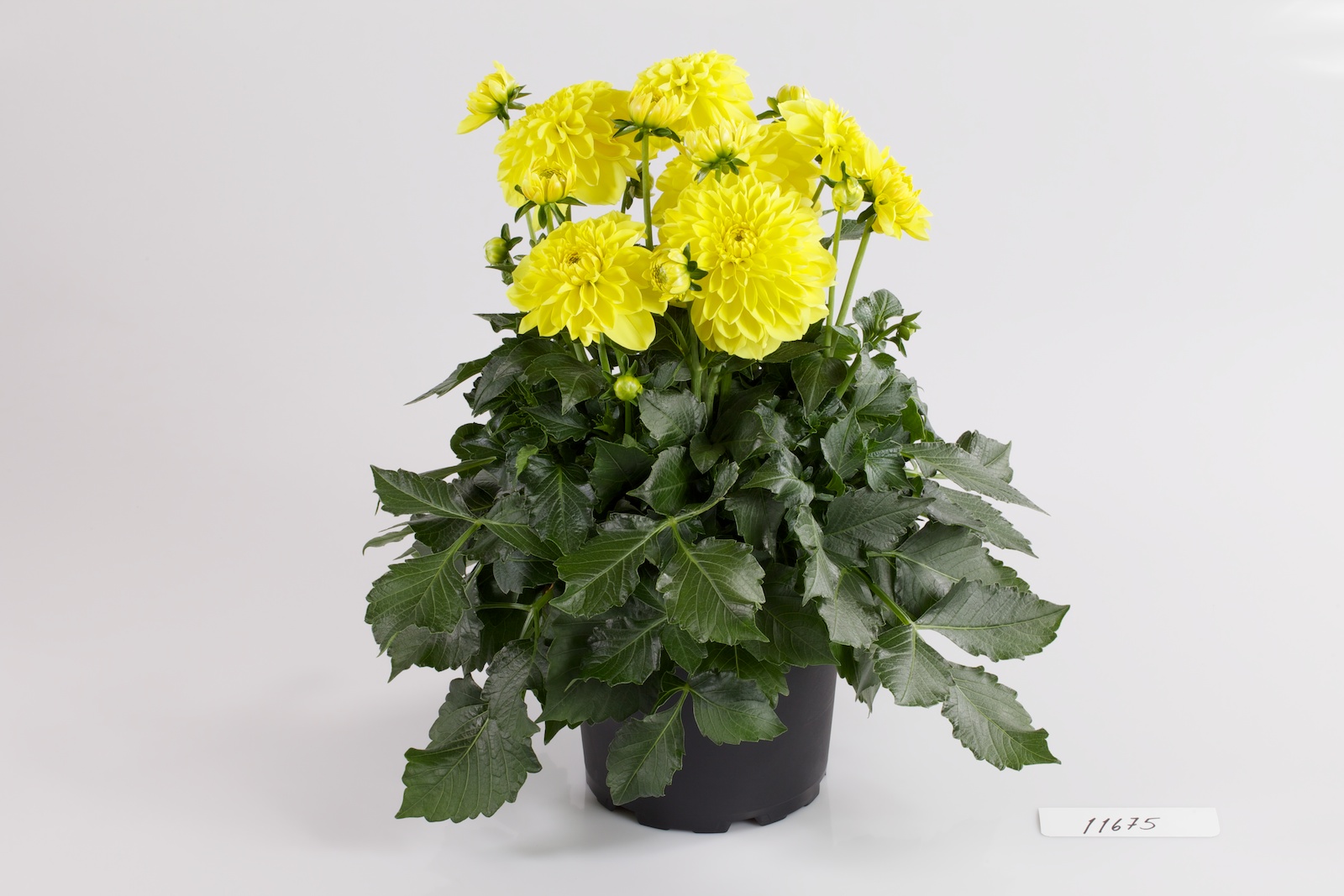Daniogtyve
| Denomination: | 'Daniogtyve' |
|---|---|
| Botanical Name: | Dahlia |
| Applicant/Holder: |
Ball Horticultural Company 622 Town Road West Chicago, Illinois 60185 United States of America |
| Breeder: |
Rune Harboe Nielsen, Odense N, Denmark |
| Agent in Canada: |
BioFlora Inc. 38723 Fingal Line R.R. #1 St. Thomas, Ontario N5P 3S5 Canada Tel: 519-317-7511 |
| Application Date: | 2013-10-30 |
| Application Number: | 13-8137 |
| Grant of Rights Date: | 2018-04-24 |
| Certificate Number: | 5708 |
| Date rights surrendered: | 2023-04-24 |
Variety Description
Varieties used for comparison: 'Danitten', 'BKDAYL' and 'Kiedahbay'
Summary: The depth of the incisions of the leaflet margin are shallow to medium for 'Daniogtyve' whereas the incisions of the leaflet margin of 'BKDAYL' are deep. The peduncle of 'Daniogtyve' is green whereas the peduncle of 'Danitten' and 'BKDAYL' is green tinged with brownish red or purple. In relation to the foliage, the flower head of 'Daniogtyve' is positioned high above the foliage whereas the flower head of 'Kiedahbay' is positioned moderately above the foliage. The main colour of the inner side of the ray floret is green yellow for 'Daniogtyve' whereas the inner side of the ray floret is yellow for 'Danitten'. The shape of the apex of the ray floret of 'Daniogtyve' is dentate whereas the apex of the ray floret of 'Kiedahbay' is rounded.
Description:
PLANT: upright growth habit, short to medium height
STEM: green
LEAF: predominantly pinnate type, absent or weak prominence of wing, long to very long (including petiole), broad to very broad, low length to width ratio, light green on upper side, weak to medium glossiness on upper side, smooth or very weakly rugose surface texture, raised veins
LEAFLET: elliptic shape, acute base, medium number of shallow to medium deep incisions along margin (excluding lobes)
PEDUNCLE: medium to long, green
FLOWER HEAD: positioned high above foliage, semi-upright attitude, double type, no collar segments, small to medium sized diameter, medium height, medium density of ray florets
RAY FLORET: medium length, very broad, very low to low length to width ratio, ribbed on inner side, in cross-section strongly concave at mid-point, in cross-section moderately concave at three quarter point from base, weakly revolute rolling of margin along distal half, longitudinal axis is weakly incurved along distal half, absent or very weak twisting, dentate apex, green-yellow (RHS 1A) on inner side, colour of outer side is similar when compared to colour of inner side
Origin & Breeding History: 'Daniogtyve' originated from a naturally occurring mutation of the variety 'Danitten'. The mutation was observed in August of 2012 as part of a breeding program. The objectives of the breeding program were to develop new Dahlia varieties with a uniform and compact plant form and colourful, attractive flowers. 'Daniogtyve' was selected in May of 2013 for its compact plant growth habit and yellow coloured flowers.
Tests & Trials: The detailed description of 'Daniogtyve' is based on the UPOV report of Technical Examination, application number 2013/1701, purchased from the Community Plant Variety Office, in Angers, France. The trial was conducted in 2014 by the National Institute of Agricultural Botany, in Cambridge, United Kingdom. The colour determinations were made using the 2007 Royal Horticultural Society (RHS) Colour Chart.
Comparison table for 'Daniogtyve' with reference varieties 'Danitten', 'BKDAYL' and 'Kiedahbay'
Main colour of ray floret (RHS)
| 'Daniogtyve' | 'Danitten' | 'BKDAYL' | 'Kiedahbay' | |
|---|---|---|---|---|
| inner side | 1A | 12B | - | - |
Click on image for larger view

Dahlia: 'Daniogtyve'
Click on image for larger view

Dahlia: 'Daniogtyve' (left) with reference variety 'Danitten' (right)
- Date modified: